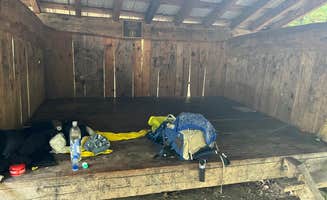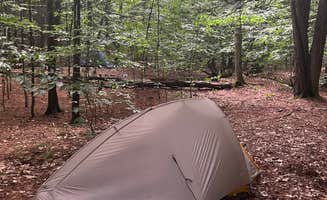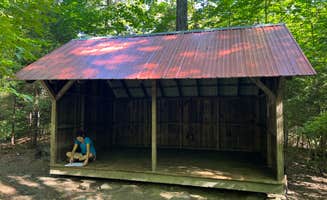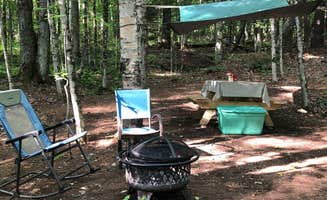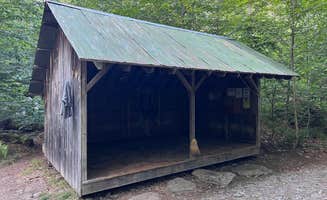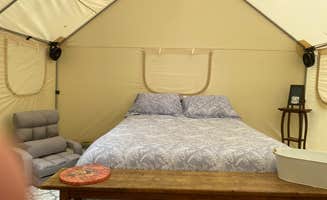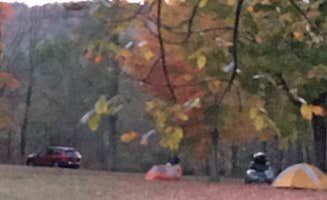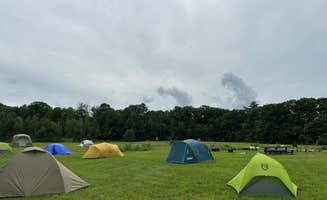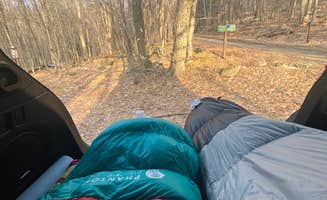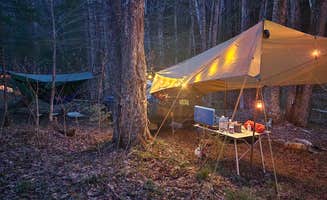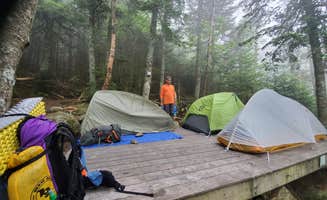The Appalachian Trail corridor surrounding White River Junction offers primitive backcountry camping options at elevations ranging from 800 to 2,200 feet. The terrain consists primarily of northern hardwood forests with maple, beech, and birch trees dominating the landscape. Seasonal conditions vary significantly, with summer temperatures averaging 65-80°F during peak hiking months, though nighttime temperatures can drop to the 40s even in July.
What to do
Swimming options: At Stony Brook Shelter, campers can access a small swimming area downstream from the campsite. According to Justin P., there's "a decent swimming hole (could just barely submerge myself) to clean off a bit" located just off-trail down Stony Brook.
Viewpoint hikes: For those willing to continue past Trapper John Shelter, Holt's Ledge offers scenic vistas. As one camper noted, "There was no view or other point of interest here, though a bit further up the trail there were good views at Holt's Ledge."
Fire tower climbs: Mount Cardigan provides a challenging but rewarding day hike accessible from nearby camping areas. Madison G. reports, "The climb is challenging but shouldn't take too long. Great fire tower views at the top too!"
What campers like
Shelter amenities: Happy Hill Shelter features a unique two-level design that improves comfort for overnight hikers. One camper explained: "The shelter had a ground floor and a loft but each floor could maybe fit 4-5 people comfortably. The loft was nice since folks could decide to sleep up there while others were down below, either cooking, arriving, or departing."
Tent site positioning: Moose Mountain Shelter stands out for its thoughtful design incorporating both shelter space and scenic resting areas. Justin P. noted the shelter "did stand out with a bench overlooking a clearing in the brush with a view which was a great place to enjoy my freeze dried dinner."
Bear storage options: Unlike many AT shelters in Vermont, Stony Brook Shelter provides dedicated food storage for backcountry campers. "There was also a bear box here, which I hadn't seen at other shelters along the AT in Vermont," reports one hiker, making this location more suitable for multi-night stays.
What you should know
Water availability: Seasonal drought significantly impacts water sources at tent camping locations near White River Junction. At Trapper John Shelter, a recent visitor reported, "There is a water source in the area but it did not have water when I visited (probably on account of the drought)."
Site privacy: Tent camping areas offer varying degrees of seclusion between sites. Winturri Shelter provides "lots of tent camping spots as you worked up the hill perpendicular to the shelter" with spaces having "decent privacy."
Site levelness: Terrain quality varies significantly between locations. While Moose Mountain offers "large, flat tent sites," Thistle Hill Shelter reportedly has "smaller spots for tent camping that were somewhat sloped."
Tips for camping with families
Privy conditions: Newer, well-maintained facilities improve comfort for younger campers. At Stony Brook, "The privy looked brand new and was more spacious than most on the trail," while Moose Mountain's facility was described as "new and very spacious."
Space requirements: For families needing multiple tents, prioritize shelters with larger designated camping areas. Stony Brook Shelter offers "a few large tent areas where multiple tents could fit and which looked quite level."
Staff interactions: When camping at established sites rather than backcountry locations, staff support can enhance family experiences. At Cardigan Campsites, visitors report "Staff is very friendly," making the location more accessible for less experienced campers.
Tips from RVers
Limited options: Traditional RV camping is severely restricted near the AT corridor around White River Junction. The primitive nature of tent camping sites means RV access is virtually nonexistent. Velvet Rocks Shelter and similar locations are "100% long hike in with no guaranteed water and a basic privy."
Planning alternatives: Visitors with RVs should investigate established campgrounds further from the trail corridor. North Hartland Lake Beach offers some electric hookups but lacks other RV amenities like sewage disposal or water connections common at full-service campgrounds.


